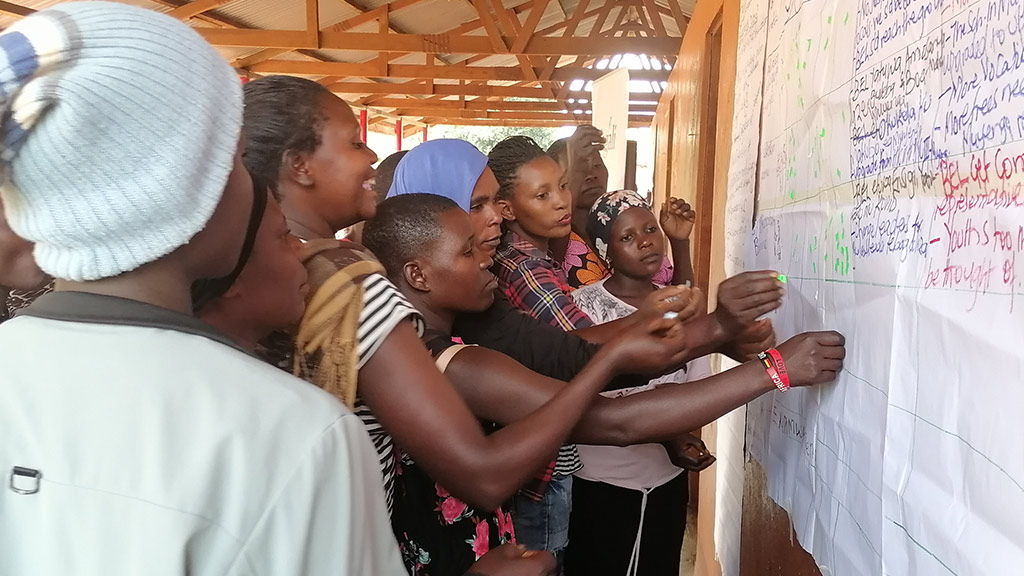
Bujagali Electric Limited, Hydropower, Uganda
CSC helped create awareness about the company’s community investments, and strengthened dialogue and mutual understanding.
 Photo by IFC
Photo by IFC
CSC guides the community investment strategy of Bujagali, Africa’s largest privately financed hydropower plant
Bujagali Electricity Limited (BEL) is the operator of the 250 MW run-of-the river hydropower plant on the Nile River in Uganda. Operating since 2012, Bujagali currently contributes 45 percent of the country’s annual electricity generation through the provision of reliable, renewable energy.
The company wanted to develop a new and inclusive community investment strategy that would ensures sustainable social impact across its nine host communities. IFC suggested deploying the community scorecard (CSC) methodology to assess community perceptions of BEL’s current social programs as well as to facilitate a participatory and gender-responsive process to design the new strategy.
About the CSC exercise
The five-week hybrid CSC process included a digital CSC methodology training for BEL staff. Following the training, the CSC implementation team—including two national consultants and two BEL community liaisons—conducted eight, two-hour in-person community assessment meetings. Four meetings were held along the riverbanks, one each with younger women, older women, younger men and older men, totaling 198 community participants. At the meetings, the group identified characteristics of a good corporate neighbor and offered their assessment of BEL’s performance according to the identified criteria. Next, BEL staff and selected community representatives convened two follow-up interface meetings to agree on priority action plans. Together, the group decided to set two priority action plans—one for each side of the river.
Results
The CSC revealed that while community members were broadly satisfied with BEL’s current community program there was discontent with the way community investments were managed. Community members underscored the need for greater transparency. They proposed that BEL rethink how it distributes community benefits in order to broaden the reach. They also suggested better monitoring of community investments to ensure that projects reach the targeted beneficiaries and that they are well- managed. These findings directly informed the subsequent design of BEL’s new community investment strategy, helping to identify specific projects to be supported as well as project design, delivery, monitoring and reporting.
Ultimately, the CSC helped create more awareness about BEL’s community investments. It also served to strengthen dialogue and mutual understanding between BEL and communities and create momentum for collective action.
Complementary activities
The BEL CSC process was complemented by follow-up assets-based community development (ABCD) meetings in each host village. Building on the CSC-generated action plans, the ABCD process generated a detailed assessment of existing village-specific assets and opportunities and a collectively agreed list of priority development actions, including environmental sustainability measures, that communities could achieve on their own. It also identified a list of actions requiring external support. This follow-on process played an important role, nurturing an empowering, asset-based mindset and a reduced sense of dependence on BEL.
Insights and lessons
- The strong support and active engagement of BEL’s senior management team was a key factor in ensuring the effective implementation of the CSC process and follow-up actions.
- The hybrid approach proved successful and cost effective.
- The experience affirmed the relevance and versatility of the CSC tool, which met BEL’s research and relationship-building goals and was highly valued by community members.
- It is critically important to use experienced national consultants with strong facilitation skills, expertise in participatory approaches, and proficiency in the local language.
- Disaggregation of deliberations and findings by gender and by age brought valuable insights about the specific priorities and concerns of different social groups and allowed the BEL team to target its community investment activities in ways that would enhance engagement with youth and better respond to the needs of girls and women.
- Inviting CSC meeting participants to propose and draw symbols to represent each identified assessment criterion ensured that community members with limited literacy could participate effectively.
- In addition to allowing participants to collectively agree on action plans, interface meetings gave BEL staff the opportunity to respond to certain community complaints that came up, such as explaining the security reasons that community members cannot access the BEL plant bridge.
- Annual CSCs can enable routine monitoring of the community investment strategy and ensure ongoing dialogue between BEL and host communities.

Want to implement a CSC?

THE COMMUNITY SCORECARD IS SUPPORTED BY:
